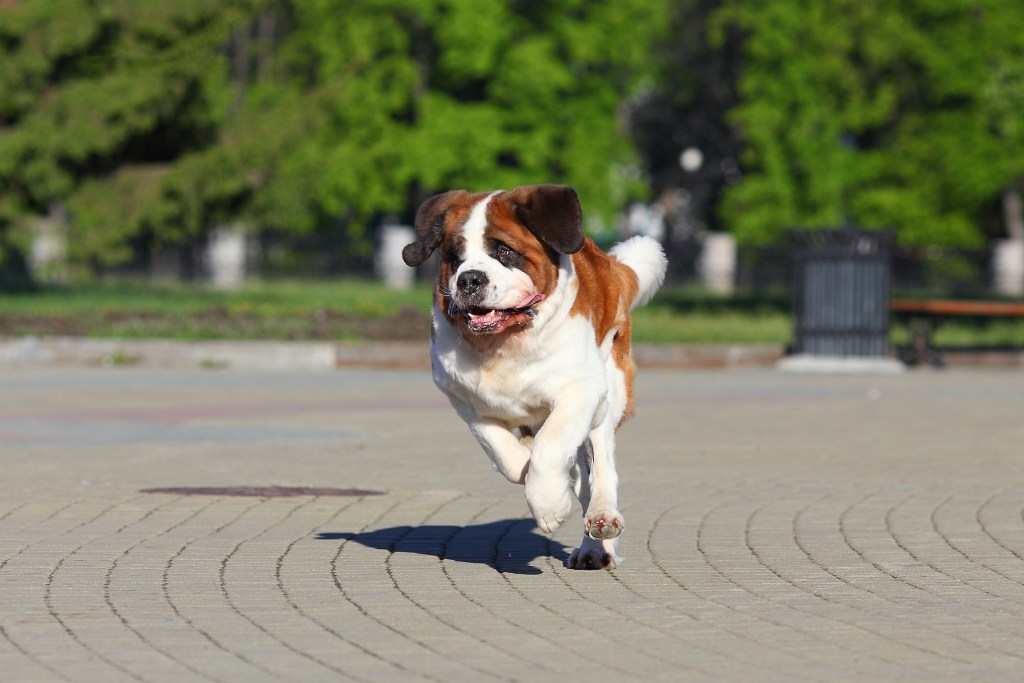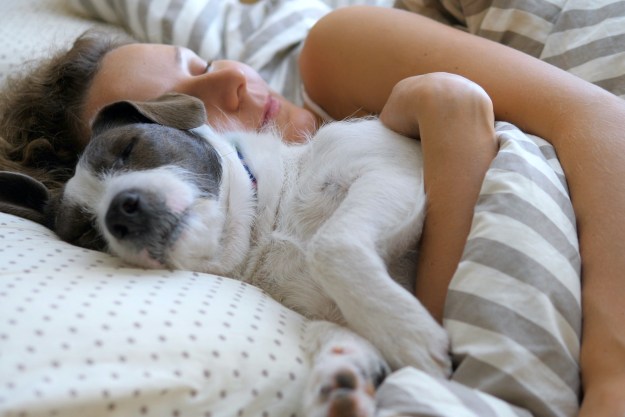Knowing how to choose a dog crate can be challenging for any pet parent but especially for those whose fur babies are, well, not quite so babyish. Large breeds like your St. Bernard sometimes exceed the maximum weights and sizes on dog crate size charts, but that doesn’t mean you won’t find a crate for your pup. You just haven’t found the right one!
Although you may be concerned about the size of the space, there are several factors to consider when browsing for the perfect crate. Will you be able to let your pet in and out with ease? Does the crate fold up for on-the-go usage? These are all important, but only you know what you’re really looking for — other than a crate large enough for your dog, of course! Here are a few tips that may help you pick the perfect crate for your St. Bernard:
Measure your dog
Before shopping around, it helps to know exactly what you’re looking for. Many crates are sized like clothing: small, medium, large, and so on — but what do these sizes mean? You may automatically think to choose the largest-size crate for your St. Bernard — probably correctly — but having exact measurements to go by will ensure a comfortable fit for your furry friend.
According to the dog crate pros at Petco, you should measure from the tip of your dog’s tail to the very front of his nose for the most helpful reading. Once you have this number, add 2 to 4 inches to get the ideal crate length for your dog. These extra inches help accommodate any movement from your pup since dogs often need to stand up, turn around, or get comfy in their crate.

How to choose a dog crate size
When actually shopping for your dog’s crate, don’t pay attention to the size (large, etc.) — pay attention to the crate’s length, width, and height. All three measurements should be equal to your dog’s length plus 2 to 4 inches for comfort.
Although your dog may like to curl up in his crate, sizing down isn’t a good idea. If you’d like to give him an extra feeling of security (dogs are den animals, after all), you can always purchase a crate cover to create an enclosed space. Blankets will do the job as well, though your blankets might already be inside the crate keeping your St. Bernard cozy.
If you’re considering a crate for your dog that lists only sizes and not inches, measure it! If your local pet store has it in stock, you can check it out yourself to see if it might be a good fit. Shopping this way will let your dog check it out, too!
Consider your dog’s weight when buying a crate
Another measurement that goes into the size of a dog’s crate is weight — not the weight of the crate but of the dog that will be in it. Since most crates have a floor base, this measurement matters, too. The last thing you’d want is for your dog to make a crack in the crate as soon as he lies down!
If your dog’s weight and length lead you toward two different sizes, it’s a safe bet to go larger. You can always size down if needed, but forcing your pup into a crate that’s too small could make your dog dislike crates altogether. Starting with a short amount of time in the crate will help both of you get used to the change while letting you get an idea of how comfortable your St. Bernard feels in his new space.

Crate characteristics to consider
If you have a small space or want to bring a crate wherever you go, there are many folding dog crates for you to check out. Despite concern over durability, these easily-put-together crates are just as safe (and highly reviewed) as their fixed counterparts. No matter what, you should always choose a crate that you feel comfortable handling: opening and closing the latch, taking it apart in case of emergency, etc.
Crates do come with different latches on the doors, so this is just one more reason to shop in person rather than online. You can try the latches out for yourself so you know just what you’re getting into. The crate’s weight is something else to consider, especially if you’ll be traveling with it. Although most are made of metal, some crates use heavier-gauge material than others. It’s worth looking around!
With some research and a little patience from you, your big fur baby will have the coziest spot in the house. If you’re still unsure of where to begin when it comes to finding a crate for your St. Bernard, make a list of all the crate qualities you can think of: height, weight capacity, the weight of crate, latch function, and anything else. Prioritize these on paper the best you can — which features are the most important to you? This might give you an idea of where to start your search or what to ask for if you decide to browse in stores. We hope this helps!
Editors' Recommendations
- How many dog breeds are there, really?
- Can dogs eat oranges? Read this before feeding your pet
- The best medium-sized dog breeds for your family
- The best oversized dog beds your pup will love
- Does your dog drink a lot of water? Here’s when you should be concerned




